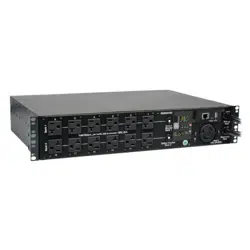Loading ...
Loading ...
Loading ...

22
5. CLI Commands
show trigger
Use the show trigger command to display an enumerated list of all applicable events. Within the list, an asterisk (*) denotes
that the event is selected as a trigger.
Syntax
show trigger [<name-pattern>]
• name-pattern – a string of characters by which the displayed list of trigger events will be filtered.
Examples
The following command displays all applicable trigger events for entry “Notify Server #1”:
console> action (Notify Server #1)> show trigger
# EVENT TYPE ON SET ON CLEAR SOURCE
---- ----------------------------------- --------- ------ -------- ------
1 Watchdog NTP Probe Failed autoprobe no no Watchdog NTP
2 Watchdog Ping Probe Failed autoprobe no no Watchdog Ping
3 Battery Bad device no no UPS123
* 4 Battery Capacity Below Warning Level device yes no UPS123
* 5 Battery Low device yes no UPS123
38 Contact Output 2 in Alarm device no no Sensor07
* 39 Temperature Beyond Limits device yes yes Sensor07
alert
alert acknowledge
Use the alert acknowledge command to acknowledge one or more alerts. Alerts can be acknowledged as a series of
numbers (i.e. “3,4,5,6”), as a range of numbers (i.e. “3-6”), or in combination (i.e. “3,5-8,10,12-15”).
Syntax
alert acknowledge {all | <alert-1>[,<alert-2>...<alert-N>]}
• alert-x – Sets a comma-delimited list of record numbers to be acknowledged.
• all – Sets all alerts to be acknowledged.
Examples
The following command acknowledges all alerts:
console> alert acknowledge all
Update complete
The following command acknowledges alert log records 1, 5, 6, 7, 8 and 12:
console> alert acknowledge 1,5-8,12
Update complete
Loading ...
Loading ...
Loading ...
